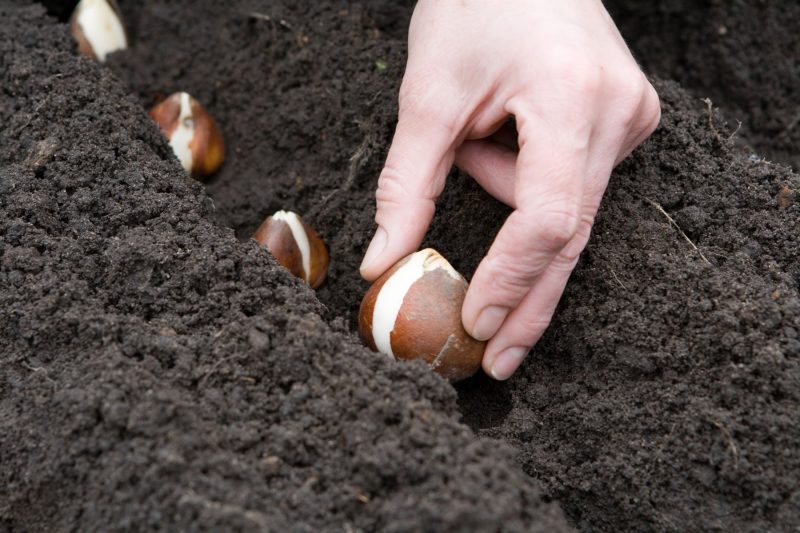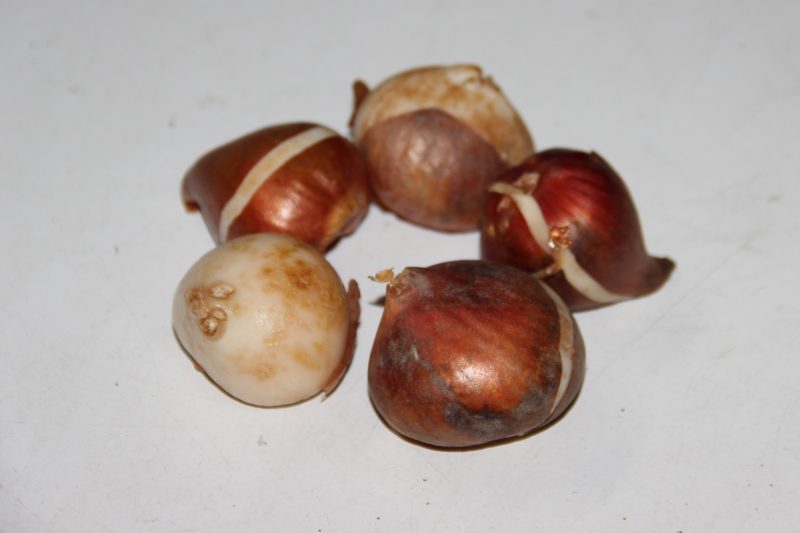In the spring, when tulips bloom, the gardens acquire a unique charm. Modern terry varieties are more like peonies, stand for a long time in a cut. Ordinary goblet flowers delight with a variety of colors and graceful forms.
Material Content:
Early and late varieties of tulips
There are thousands of beautiful varieties of tulips. All of them are combined in 15 classes in accordance with the timing of flowering and appearance. Listed below are popular modern plants of different periods of the appearance of luxurious buds.
Peony early varieties of terry tulips with a description of the color of the flower:
- "Foxtrot" - pale pink;
- "Redwood" - bright red;
- "Monsella" - golden yellow with a scarlet strip in the central part of the petals;
- "Global Deser" - snow-white;
- Verona is rich yellow;
- "Anthracite" - burgundy.
Triumph tulip varieties of medium flowering period:
- "Fontainebleau" - for lovers of exotic, dark burgundy with white trim;
- “Ash Lady” - wine-burgundy;
- "Paul Scherer" - black;
- “Lin van der Mark” - white-red, colorful flower;
- "Yellow King" - sunny yellow;
- "Deshima" - velvet red saturated color;
- White Haven - a white tulip;
- "Arabian Beauty" - purple with yellow edges of the petals.
Simple late tulips:
- "Sky High Scarlet" - bright scarlet;
- "Cafe Naur" - the color of coffee and ripe cherries;
- "Blushing Girl" - snow-white with a pink tint on the edge.
Late flowering peony tulips:
- "Finola" - light pink;
- "Statement" - scarlet;
- “Orange Angelica” - golden orange;
- Casablanca is pure white.
It is good when there is an opportunity to purchase varieties of tulips of different flowering periods in order to enjoy their inexplicable beauty in your garden longer.
Open flowering period
In the open, tulips bloom in May. These herbaceous bulbous plants are ephemeroids. Varieties that bloom first are considered early, they are replaced by plants of medium, and then late flowering.
Such a period can be shifted thanks to special agricultural techniques.
Bulbs of hybrids grown in the south of France are used to obtain autumn bouquets from these magnificent flowers. Winter, early spring and summer flowering tulips will receive through the use of greenhouses and greenhouses.
Planting, caring for tulips
In open ground, they are grown for cutting and for propagating varietal bulbs. To obtain large planting material from blooming plants, heads without a stem are cut off. In the summer, when the ground part dries up, the bulbs are dug up, treated with fungicides and stored until autumn.
Tulips are planted in open ground from mid-September to the end of October.
The land on the site is prepared 2 weeks before the start of work, although tulips are unpretentious and can grow on any soil. These flowers do not like excess nitrogen, they can not be fertilized with manure, like other bulbs.
To improve the land on the site, you can make compost, potash and phosphorus fertilizers. At the same time, it is good to dig the soil, make drainage at the bottom of the landing pit. Plants are planted to a depth equal to three bulbs. If you do this deeper, the tulip may not bloom, but closer to the surface - freeze in the frosty winter. Bulbs in the pit have a bottom down at a distance of 10-15 cm from each other.
During the growing season, flowers need abundant watering. When growing for sale, they carry out three-time dressing with mineral fertilizers for bulbs.
Diseases and Pests
Tulips are susceptible to various viral diseases, the attack of rodents and insect pests.
The most dangerous are the following diseases:
- Gray rot - such an ailment spreads by air in damp and cool weather or through contaminated soil. The first sign of damage is small yellow spots on the leaves, then the base of the stem rots and the plant dies.
- Fusarium - a fungal infection of the tulip bulb. During storage, they are covered with a pink coating, then darken, soften and die.
- Tifulez - rot that “kills” bulbs and roots, often develops in warm winters.
- Variegation - the disease causes the virus. Small light strokes appear on the leaves. The carrier is aphids, dirty garden tools, soil. The color of the buds is changing. Previously, the cultivation of new varieties specially infected with the virus was practiced. Sick plants become weaker every year, bulbs and flowers are smaller.
It is interesting:vitriol in gardening
When growing tulips, it is important to follow preventive measures that help maintain plant health and prevent degeneration of the population. For this, the bulbs are dug up annually and planted in a new place. Experienced growers practice a 3 or 5 year crop rotation cycle.
















